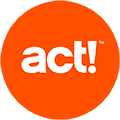
Email marketing tools have made sending a newsletter easier than ever. Unfortunately, creating one that people actually read and enjoy is still no simple task.
The good news is there are plenty of strategies that can help. Here is our in-depth guide on how to create a newsletter people love to read.
What is an email newsletter and what is it used for?
Email newsletters are a type of email marketing that helps businesses keep recipients up to date on a company, topic, or industry. They often contain links to the organization’s online content or, sometimes, relevant external content.
Email newsletters play an important part in a marketing strategy. While they will never see the conversion rates attained by highly targeted email campaigns, they are a low-cost way to connect with a large number of people.
Why newsletters matter

In the early 2010s, Facebook and other social media sites became powerful ways for companies to connect with customers.
This led many to wonder whether email newsletters were a relevant form of marketing. After all, if you needed to connect with a broad audience, social was the way to do it.
Since then, these sites have significantly reduced the organic power of business pages.
Whereas it was once possible to reach thousands (or millions) of people with a single post, you now need to pay for ads if you want to hit the big numbers.
Naturally, this led to a renewed focus on email.
Email newsletters matter for several reasons:
- Email lets you connect with customers directly.
- You own your email list.
- Email has a high conversion rate.
- Email marketing software includes powerful analytics and marketing features.
Your step-by-step guide to creating a killer email newsletter
1. Set goals
Setting up an email newsletter can be time-consuming—so you want to make sure it moves the needle in terms of your business goals.
Consider where a newsletter fits in your overall marketing strategy, as well as what it needs to achieve to make the investment worthwhile. Having a clear goal will help you with all the other steps on this list.
Typical goals for a newsletter include:
- Increase traffic to specific blog posts and website content.
- Boost product engagement amongst existing customers.
- Generate repeat sales. This is a useful strategy for e-commerce sites.
- Keep up a basic level of communication with low priority leads.
2. Plan content
Now you have defined why you are creating an email newsletter, you can begin to plan your content.
Often you will direct readers to blog posts on your website. If your articles convert effectively, this can be a good way to get more customers. The downside is that you have to create enough content to keep up with newsletter production.
Asana’s newsletter is a good version of this. In each edition, they include links to blog posts on topics such as productivity and management.
You may also consider including third-party sources in your newsletter. This is common if the aim of your newsletter campaign is to be a comprehensive industry resource.
In this case, you’ll have to search for interesting content during the week to include in your email. Consider making a list of great sources and following these sites on social media or setting up alerts.
The benefit of this type of newsletter is that you don’t have to write the content yourself. The downside is that you’ll be sending people to other websites.
FoundersGrid is a good example of this type of newsletter. Run by marketing agency Smash Digital, it contains important startup and tech-related stories published around the web from the previous week.
Sometimes, marketers will write content exclusively for each email they send out and include it all within the body of the email. This can take a lot of time but may make the newsletter more interesting.
You also don’t have to come up with a completely new idea for every newsletter. Simply repurposing your existing content may work equally as well.
Sports website The Athletic does this particularly well. Each newsletter starts with a repurposed version of a story published the previous day.
Whichever option you choose, it is a good idea to plan your content in advance with a content calendar. Also, be sure to send the newsletter out on a regular schedule you can stick to.
3. Build a contact list
An email newsletter is only effective if you have people to send it to. And, more importantly, the right people to send it to.
There are several ways you can build a list of email subscribers:
- Add a newsletter signup form or popup to your website and blog posts. Use the forms to collect contact information.
- Create downloadable lead magnets that customers can access in exchange for signing up for your newsletter.
- Give customers the option to opt-in during (or just after) they make a purchase.
- Include referral links within the newsletter that readers can use to easily forward sign-up links to people they think will find the newsletter interesting.
The exact methods you use will depend on the goals of your newsletter. If your main aim is to convert leads, you won’t need to give customers the chance to sign up for your newsletter.
Check out our article for more email list building ideas.
4. Determine the newsletter design and create a template
Now it’s time to decide on your email newsletter design. Most email services have powerful drag and drop editors that let you create great-looking newsletters without having to master HTML or CSS.
Perhaps the best way to settle on a design is to sign up for newsletters from companies you like. Use their designs as inspiration.
When creating your newsletter, be sure to test it on different devices and browsers. Most email marketing tools will allow you to send out previews. Doing so lets you confirm your newsletter will look great on all the platforms you expect people to read it on.
Once you’ve finished the design, save a newsletter template.
Using the same form factor for every email is a significant time-saver as you don’t need to worry about the design each time. Just focus on adding the content to the email template.
5. Choose a subject line, body content, and CTAs
Now is the time to actually create your newsletter. The three most important parts are the subject line, body content, and CTAs
Subject Line
Email subject lines have a huge impact on whether people open your email. Be sure to choose a line that is appealing to your audience.
Be aware that most browsers limit the amount of a subject shown. For example, smartphone email clients, including Gmail, only display around 40 characters. Either limit your subject line to this length or put the most compelling part of your title in the opening 40 characters.
Body Content
This is the main part of your email. What you include depends on the type of email you are writing. You want to ensure that the content is engaging, interests the target audience, and error-free.
Consider hiring a professional to write the content or, at the very least, having someone in your team check it over for typos.
Many companies add personalizations to their newsletters. For example, you could add a tag so that each customer is greeted by the name they signed up to your list with.
You can also segment your contacts and send slightly different content and offers to each one.
Call-to-Action
Your call-to-action is your chance to get the reader to take action. A good one will improve the click-through rate of your offers.
Best practice is to be clear about what the offer is and what the customer has to do to take advantage. The call to action should be relevant to the text around it.
For example, instead of saying “click here,” say “click to book a consultation.”
6. Legal compliance
Various privacy regulations introduced over the past few years mean there are several steps you should take when creating an email newsletter to stay compliant. These relate to how you collect email addresses, as well as the content you include. Learn more about inbox placement in this article.
On opt-in
One of the requirements of European privacy regulation GDPR is that businesses only send emails to people who have actively opted-in to receive them.
When collecting emails you should make it clear that the user is signing up for a newsletter and include a box that they have to tick to confirm they want the email. Don’t automatically tick boxes for users or send emails to an existing list you collected for a different purpose.
CAN-SPAM
CAN-SPAM requires businesses to include their address in their emails as well as an easy way for users to unsubscribe.
Most email marketing tools provide easy solutions that allow businesses to adhere to both these regulations.
7. Send your newsletter
Now’s the time to send your email. A study found that the best time to send emails in most cases was during the week. 10 a.m. was the optimal time, and between 10 p.m. and 7 a.m. was found to be significantly worse than during the day.
This is a general study you can use as a starting point for when you send your emails. Your actual best time will depend on your content and customers.
For example, the above study found that leisure-related content was more likely to have a weekend optimal send time than business-related content. This makes sense as people often want to switch off from work on Saturday and Sunday.
8. Testing and analysis
The final step is to test how your email performed. Most email marketing tools provide access to data including the percentage of people that opened the email and which parts of it they clicked on.
You can use this information to optimize your future emails. For example, by including similar content to the links many users clicked on or making subject lines similar to those with high open rates.
You can also try a/b testing to optimize your email campaigns. Send out two versions of the same newsletter with a single change to see which one performs best.
Wrapping Up
You should now have some good ideas for your own newsletter. Remember that building a list takes time. Make a long-term commitment to producing newsletters to really see if it is a good strategy for your business.
For more information about email marketing, check out our email marketing best practices guide and our article on how you can use automation to take your email campaigns to the next level.



